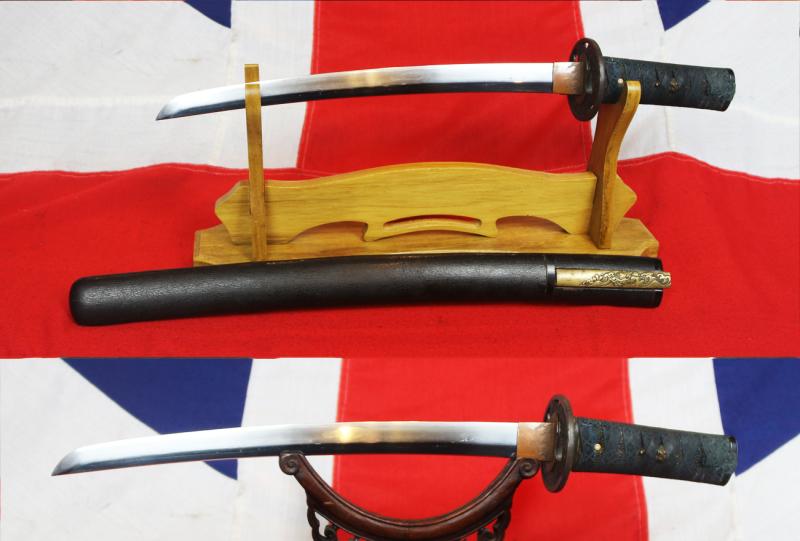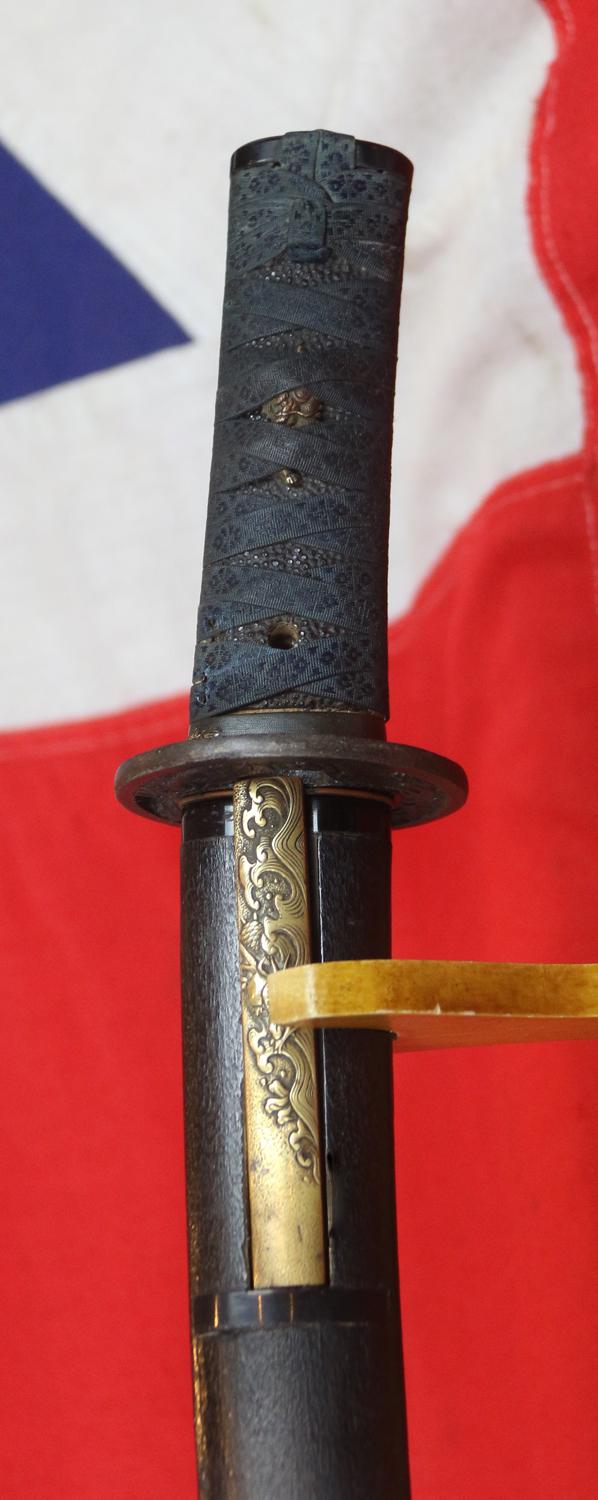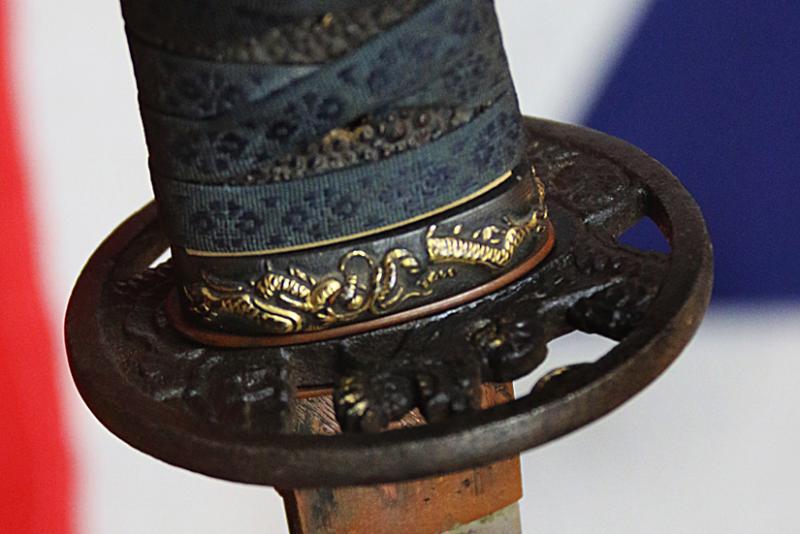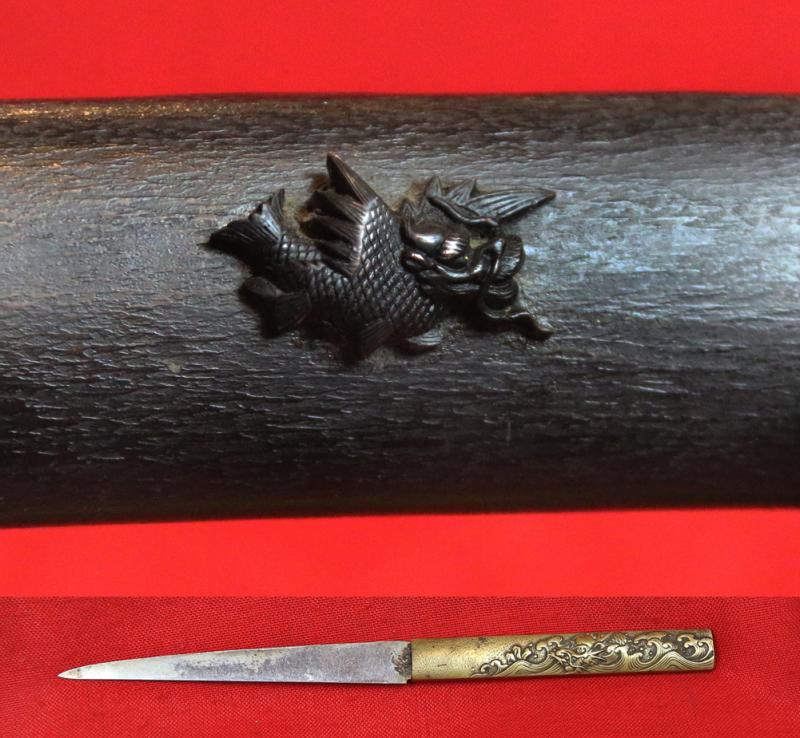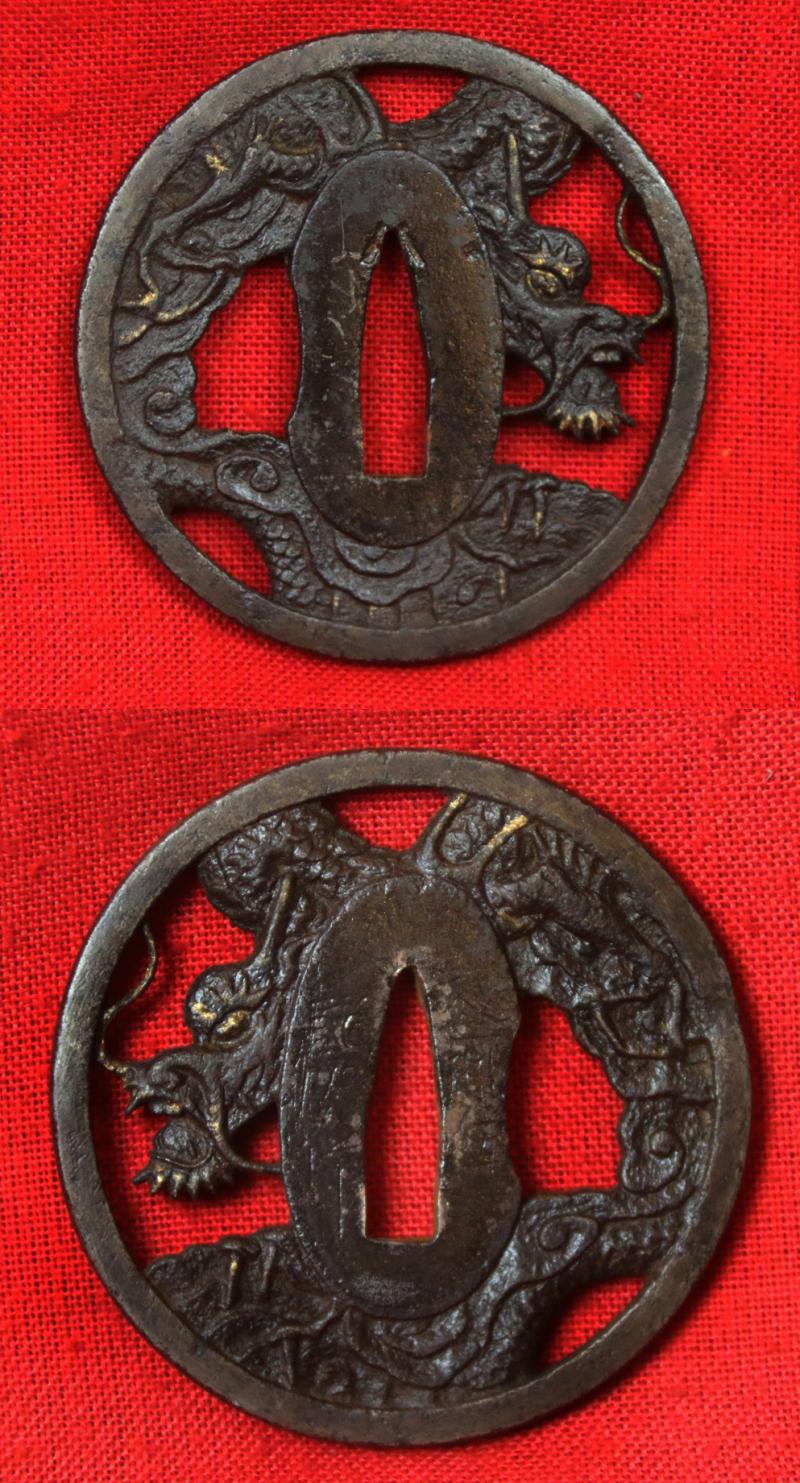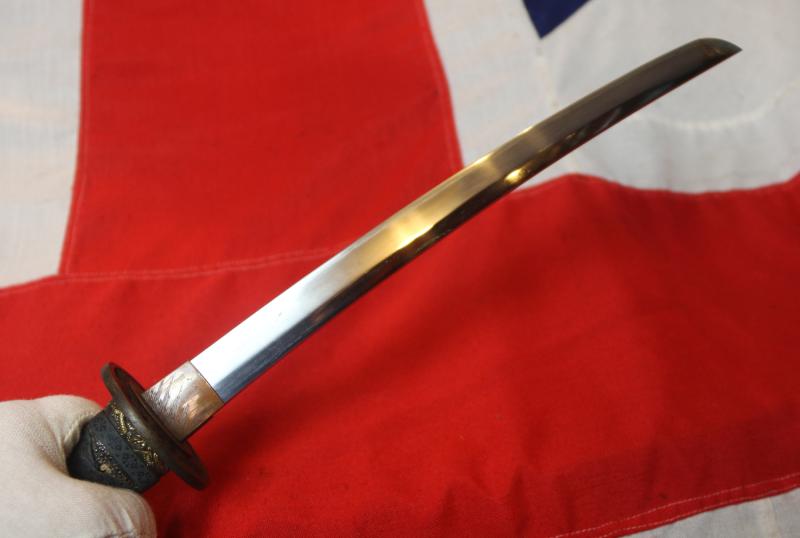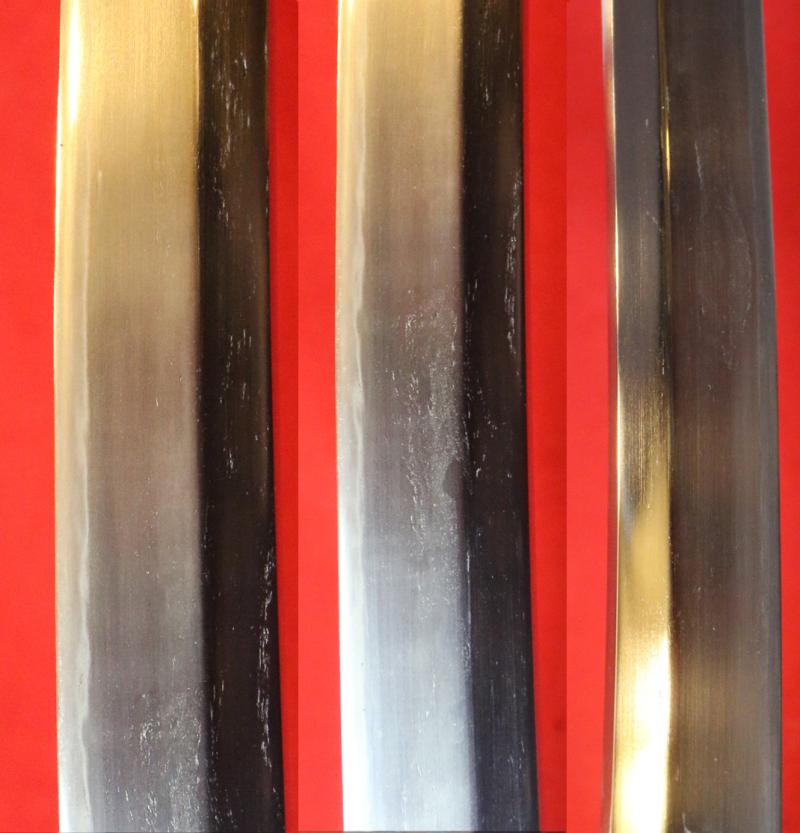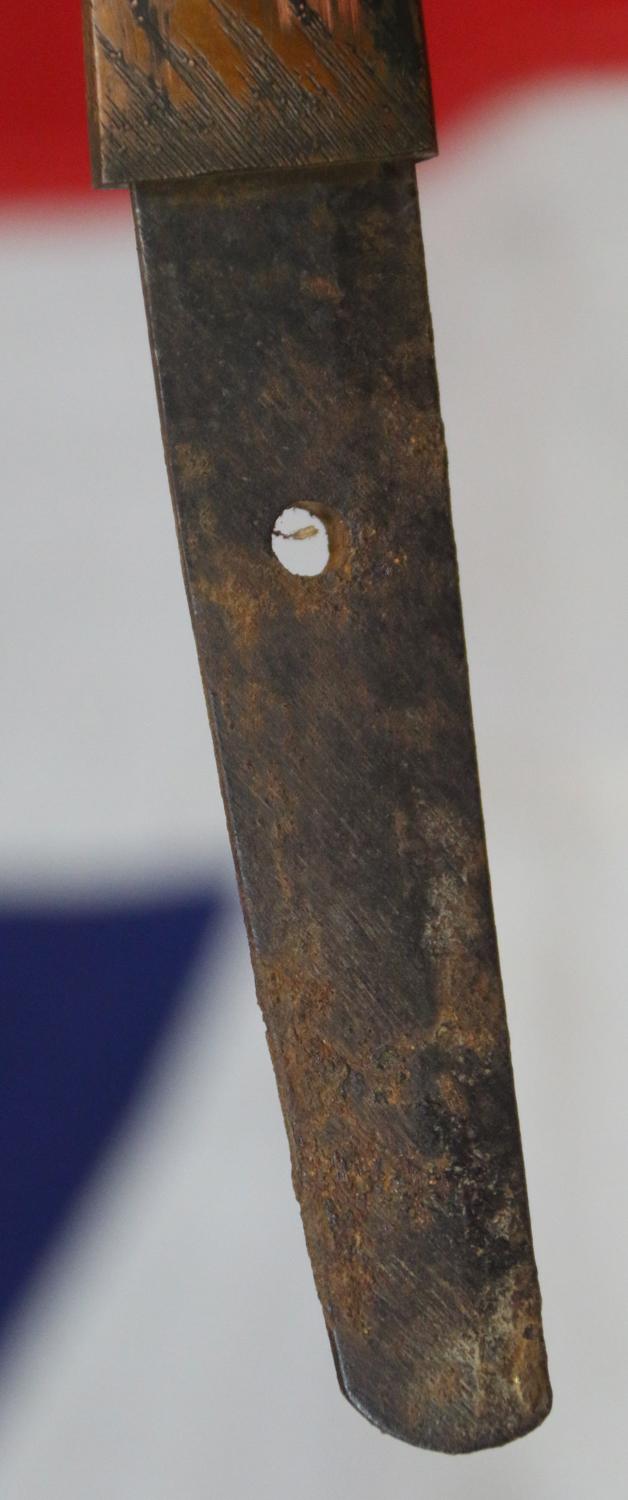A Wonderful 500 Year Old Koto Period Samurai 'Dragon' Wakizashi Samurai Short Sword, Another Absolute Beauty From Our latest collection
Based entirely around the legendary Japanese dragon, Bearing the dragon on all of its fittings and mounts including its kozuka utility knife. All of the fittings are original Edo period, of very nice quality the dragon tsuba is iron with gold highlights, of a chiselled takebori dragon signed by a very good tsuba maker, Kinai.
One has to bear in mind this tanto has been used by numerous samurai over more than a dozen generations, since the era, in England, when King Henry the VIIIth was a child.
The tsuka is superb and has its original, Edo period, beautiful mid blue silk binding, that is patterned damask silk with a clan mon design theme, with two very old, small surface moth marks. It is a very rare, and most infrequently seen form of deluxe quality tsuka-ito, that is wrapped over black samegawa giant ray-skin, over the gold dragon menuki. The fuchi is fine Soten school, of a pure gold decor takebori dragon, over a shakudo Nanak o ground. The kashira is hand carved and polished black buffalo horn.
The saya has its incredible Edo period urushi lacquer in a stippled ishime stone finish. and within its saya pocket is the kozuka utility knife, with a sinchu handle, decorated with a takebori carved sea dragon in crashing waves, the saya bears a shakudo mount of a deep and crisp, rare type takebori mythical flying sea dragon with a fishtail. The blade is in super and beautiful polish, showing a delightful light notare, based on suguha, hamon.
The original Edo period urushi lacquer on the saya is in simply excellent condition for age and shows most elegant patterning, it reveals within that intricacy the finest craftsmanship and beauty worthy of a master of the art of urushi decor. Japanese lacquer, or urushi, is a transformative and highly prized material that has traced it origins, and been refined, for over several thousands of years.
Cherished for its infinite versatility, urushi is a distinctive art form that has spread across all facets of Japanese culture from the tea ceremony to the saya scabbards of samurai swords
Japanese artists created their own style and perfected the art of decorated lacquerware during the 8th century. Japanese lacquer skills reached its peak as early as the twelfth century, at the end of the Heian period (794-1185). This skill was passed on from father to son and from master to apprentice.
The varnish used in Japanese lacquer is made from the sap of the urushi tree, also known as the lacquer tree or the Japanese varnish tree (Rhus vernacifera), which mainly grows in Japan and China, as well as Southeast Asia. Japanese lacquer, 漆 urushi, is made from the sap of the lacquer tree. The tree must be tapped carefully, as in its raw form the liquid is poisonous to the touch, and even breathing in the fumes can be dangerous. But people in Japan have been working with this material for many millennia, so there has been time to refine the technique!
Flowing from incisions made in the bark, the sap, or raw lacquer is a viscous greyish-white juice. The harvesting of the resin can only be done in very small quantities.
Three to five years after being harvested, the resin is treated to make an extremely resistant, honey-textured lacquer. After filtering, homogenization and dehydration, the sap becomes transparent and can be tinted in black, red, yellow, green or brown.
We are very privileged to be the UK’s premier original military antiques gallery and website, and to be able to consistently, continually, and regularly, offer the finest original collectors items in our shop for over 100 years
Code: 24556
4750.00 GBP


